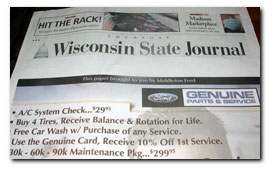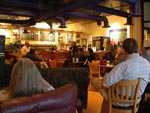Kris Oser describes (Subscription – Ad Age) the influence between advertising and media content:
Is it safe to advertise in places on the Internet that are essentially run by consumers and cannot be controlled? How can they protect themselves and their good names when blog and chat-room users are liable to say and post anything? It’s not just pornography or off-color language that worries them. What if consumers got angry about something involving a marketer’s brand, and their remarks got linked to across the Internet? Maybe advertising in such open spaces is not worth the risk.
emphasis added Dave Winer and Doc Searls offer useful comments.

